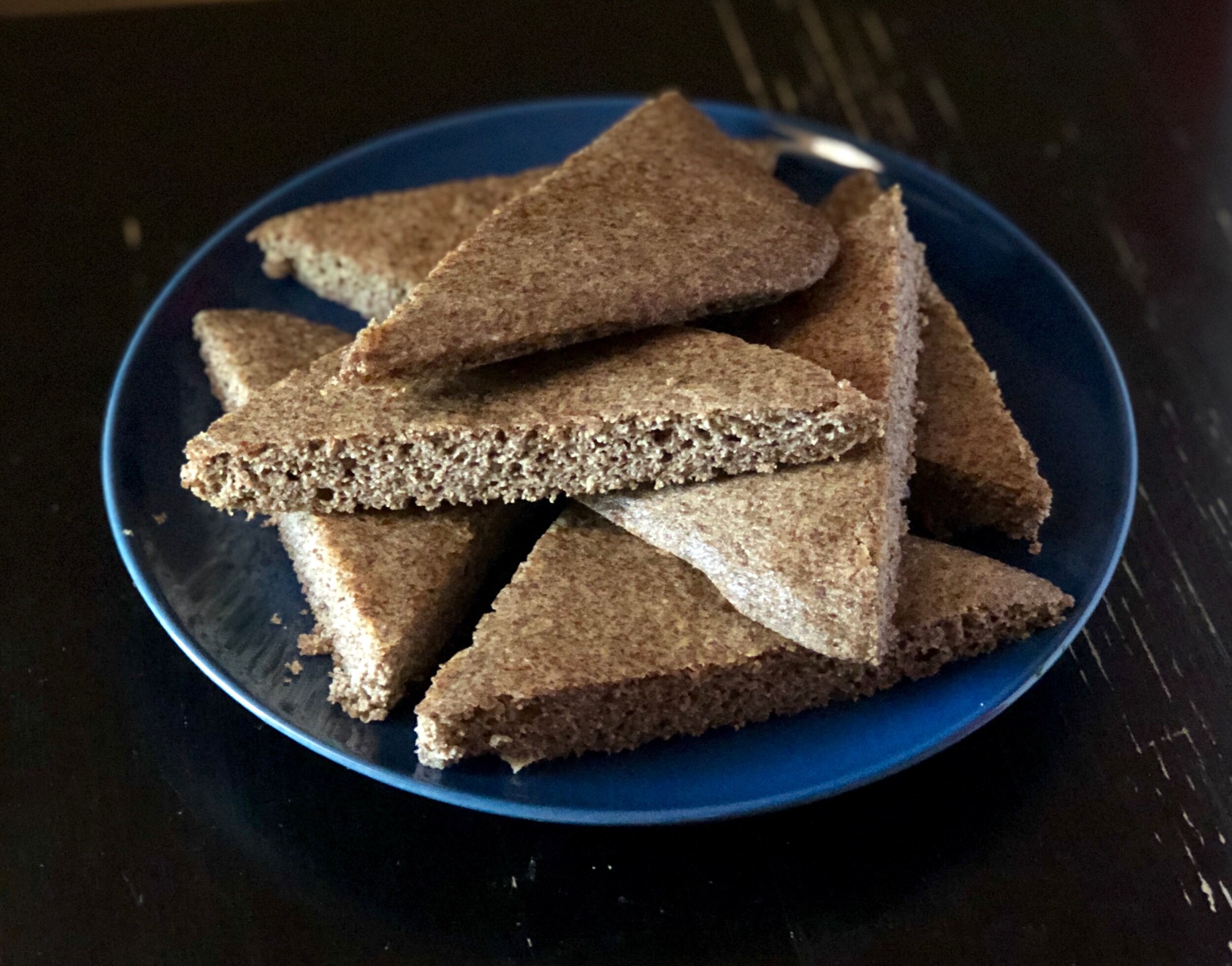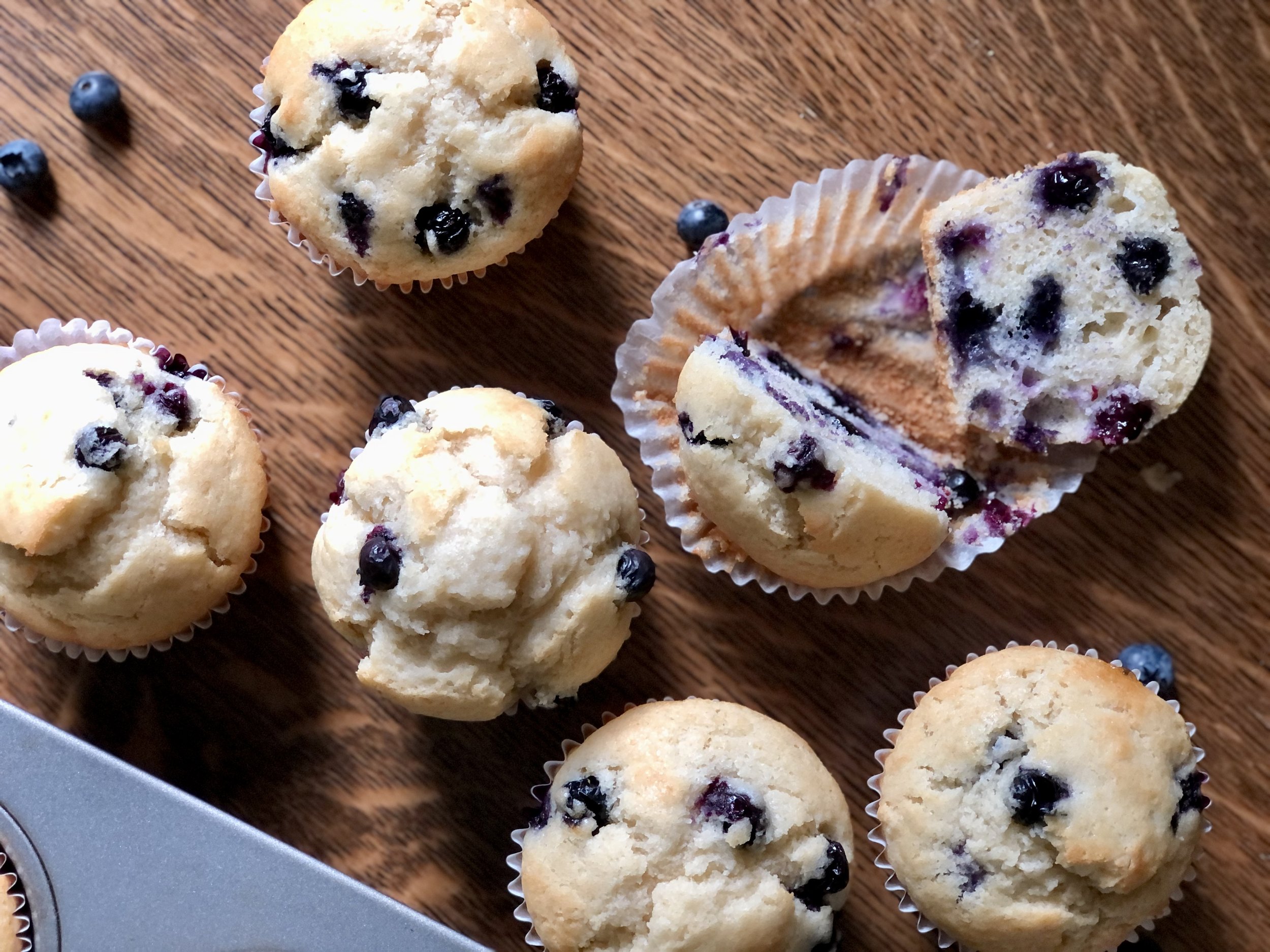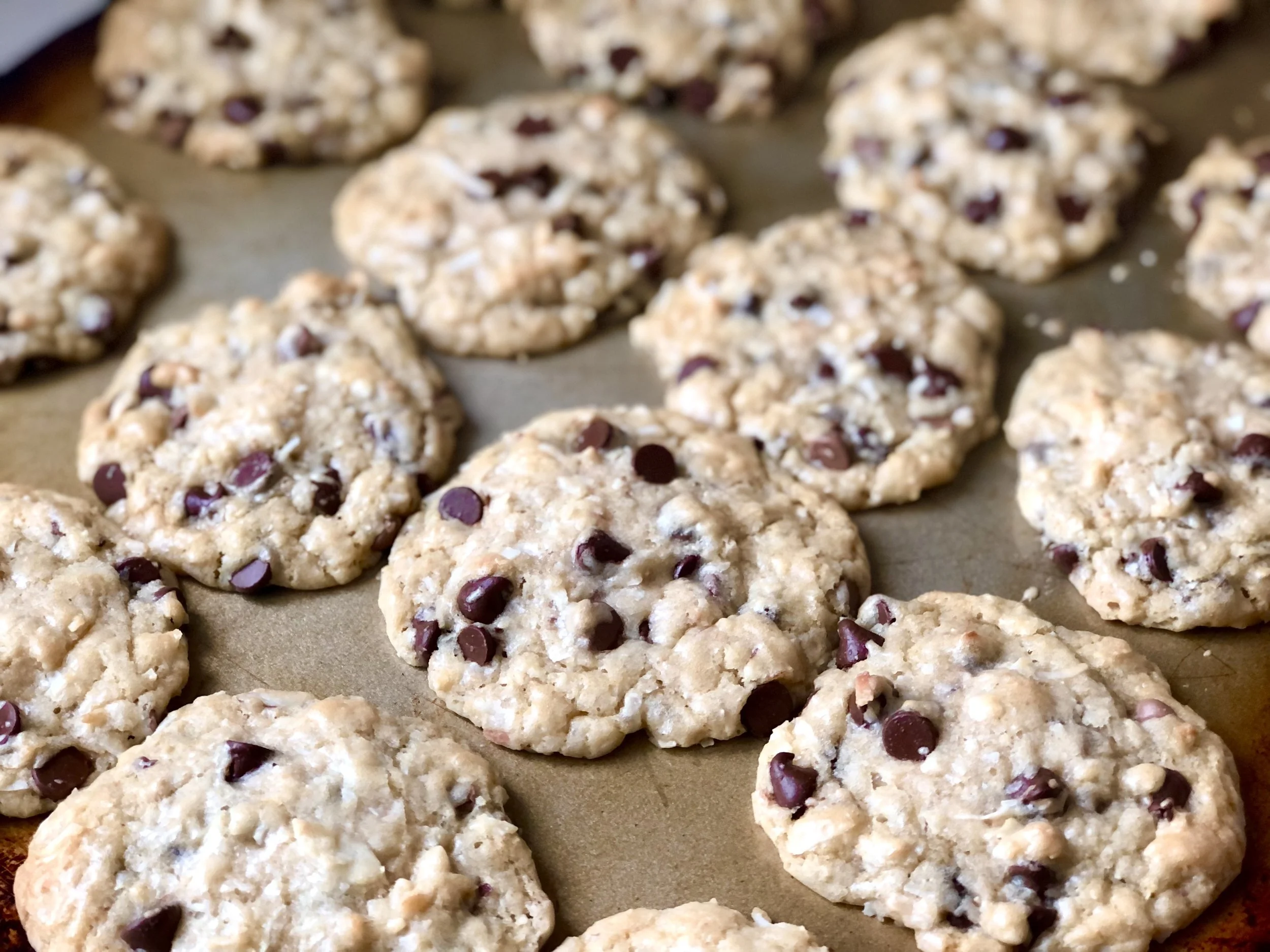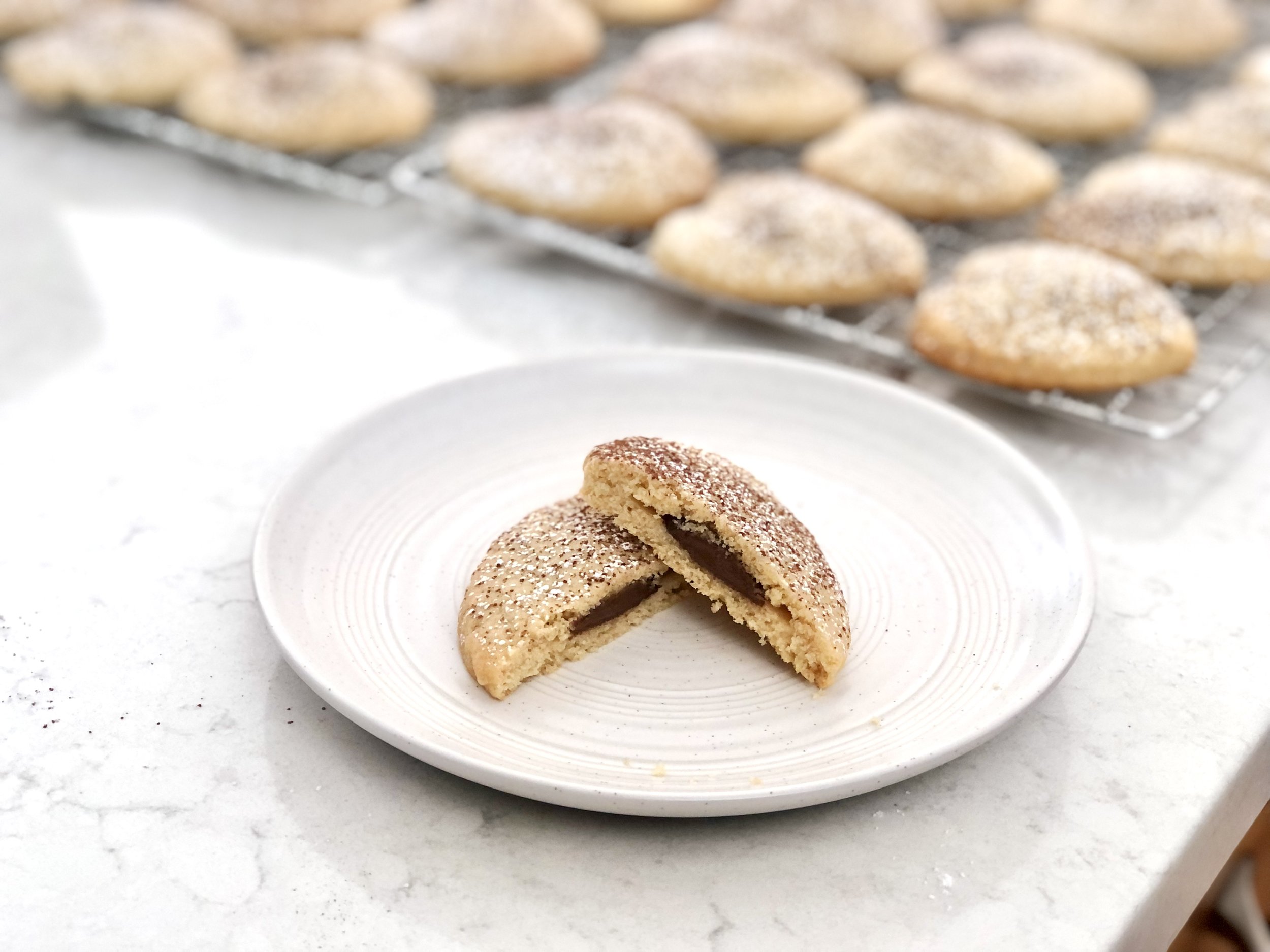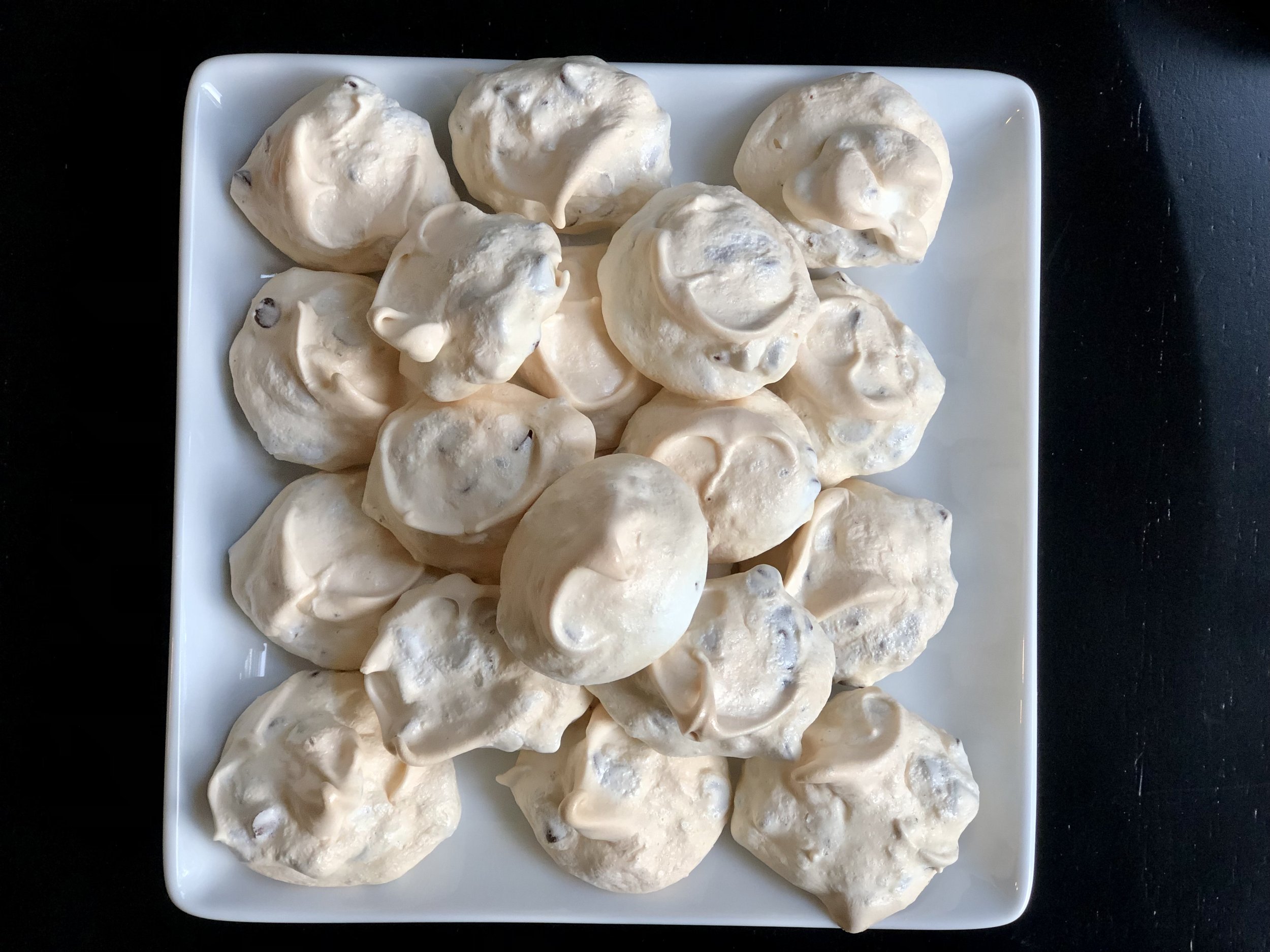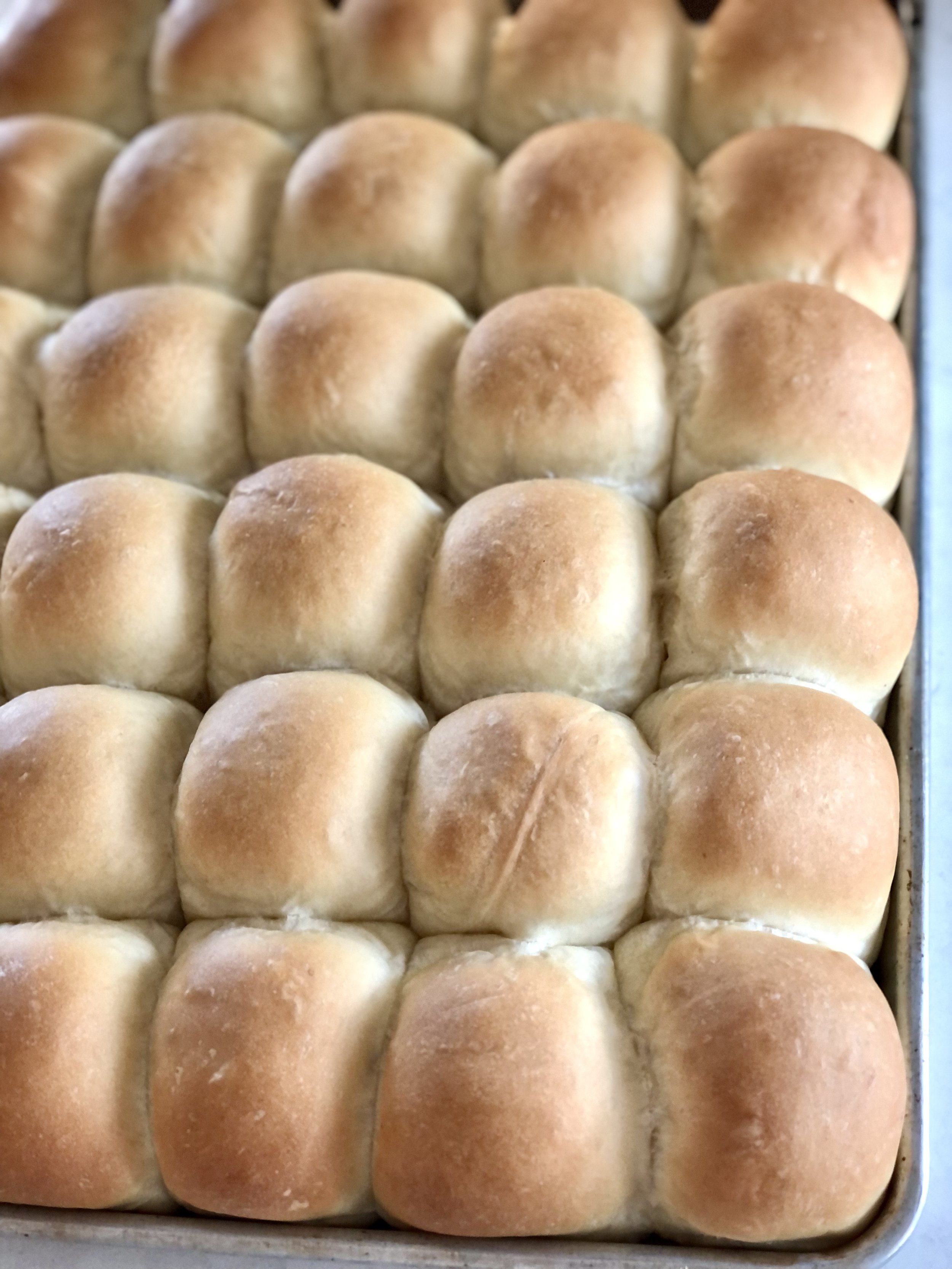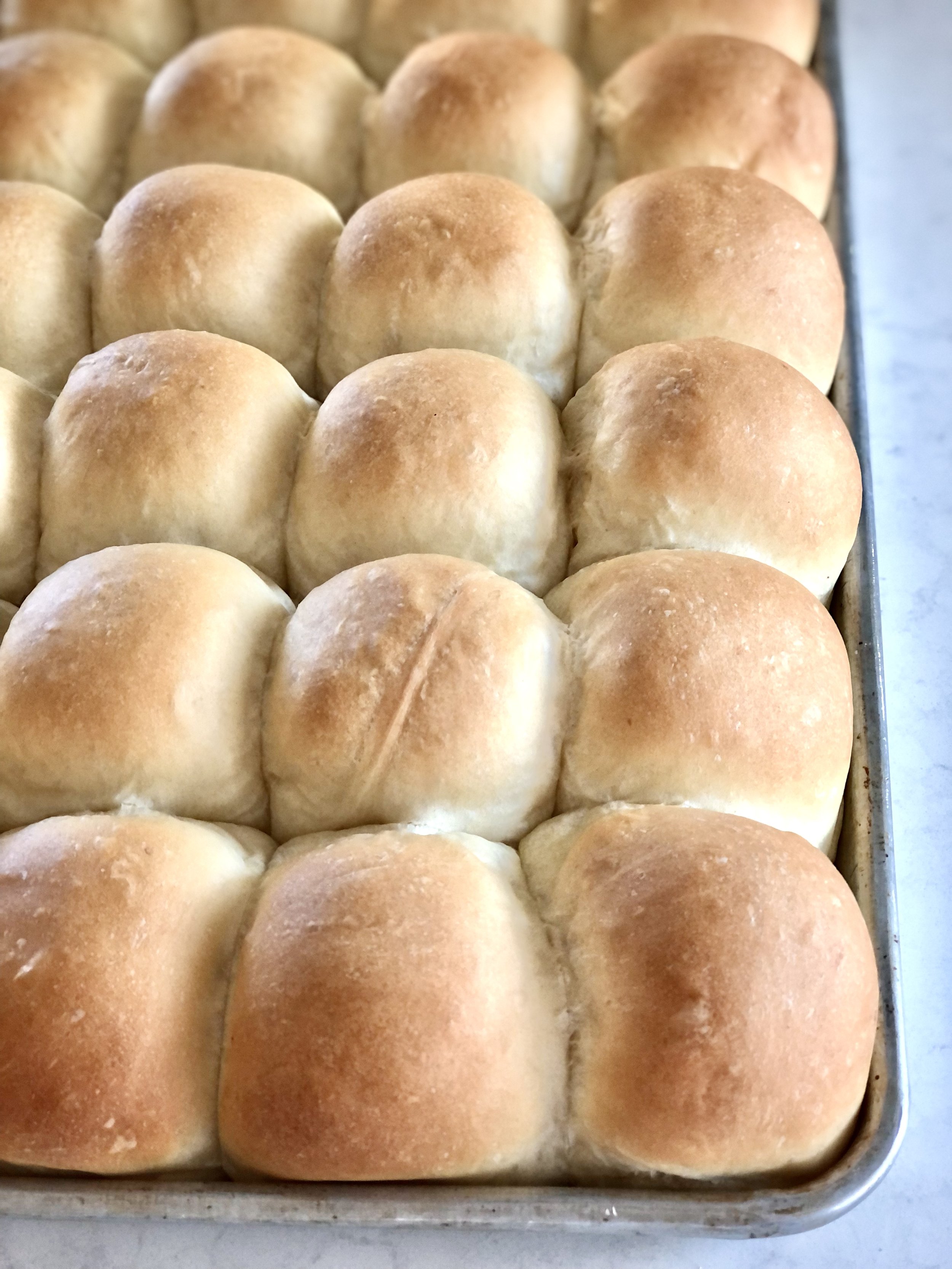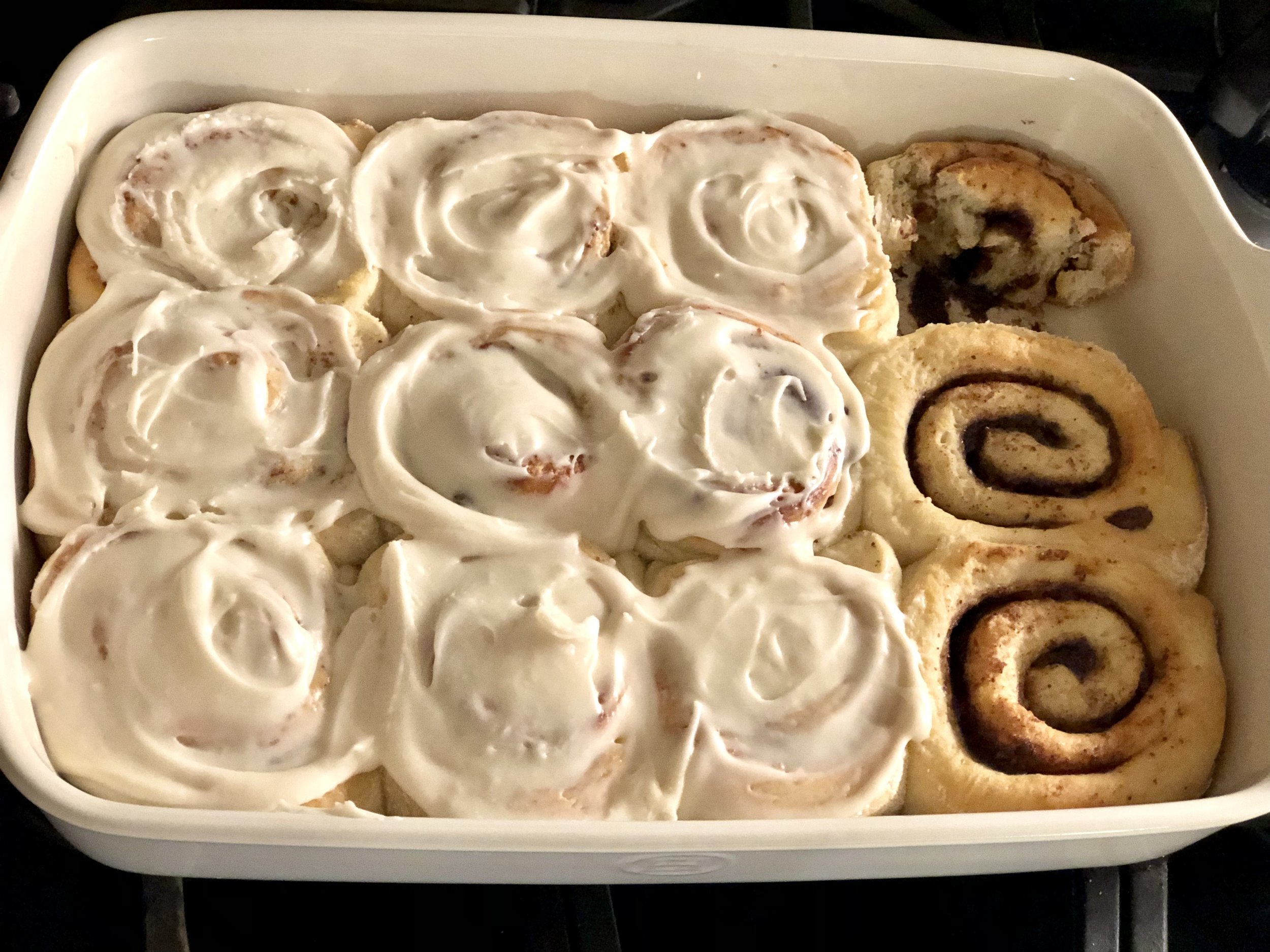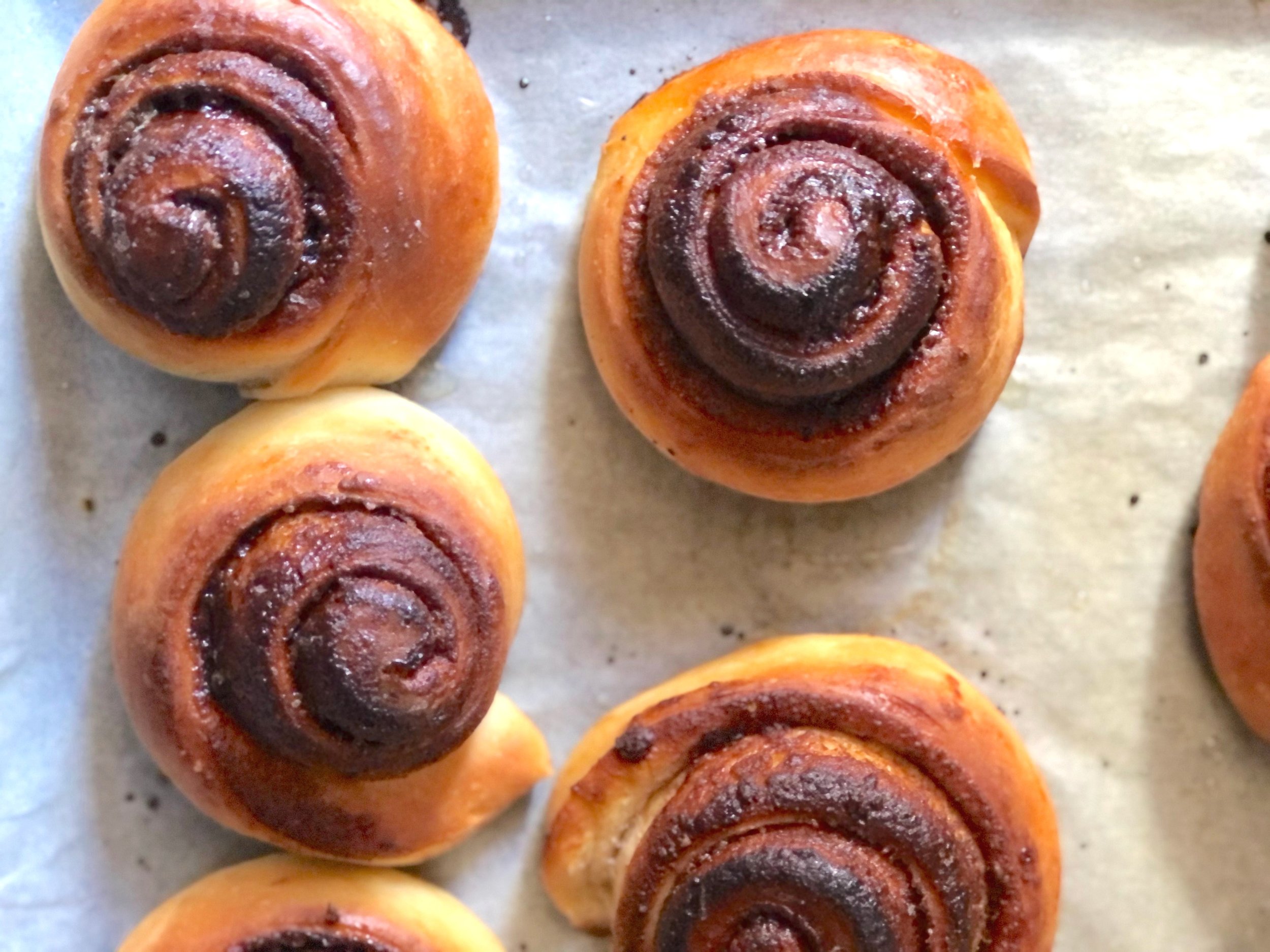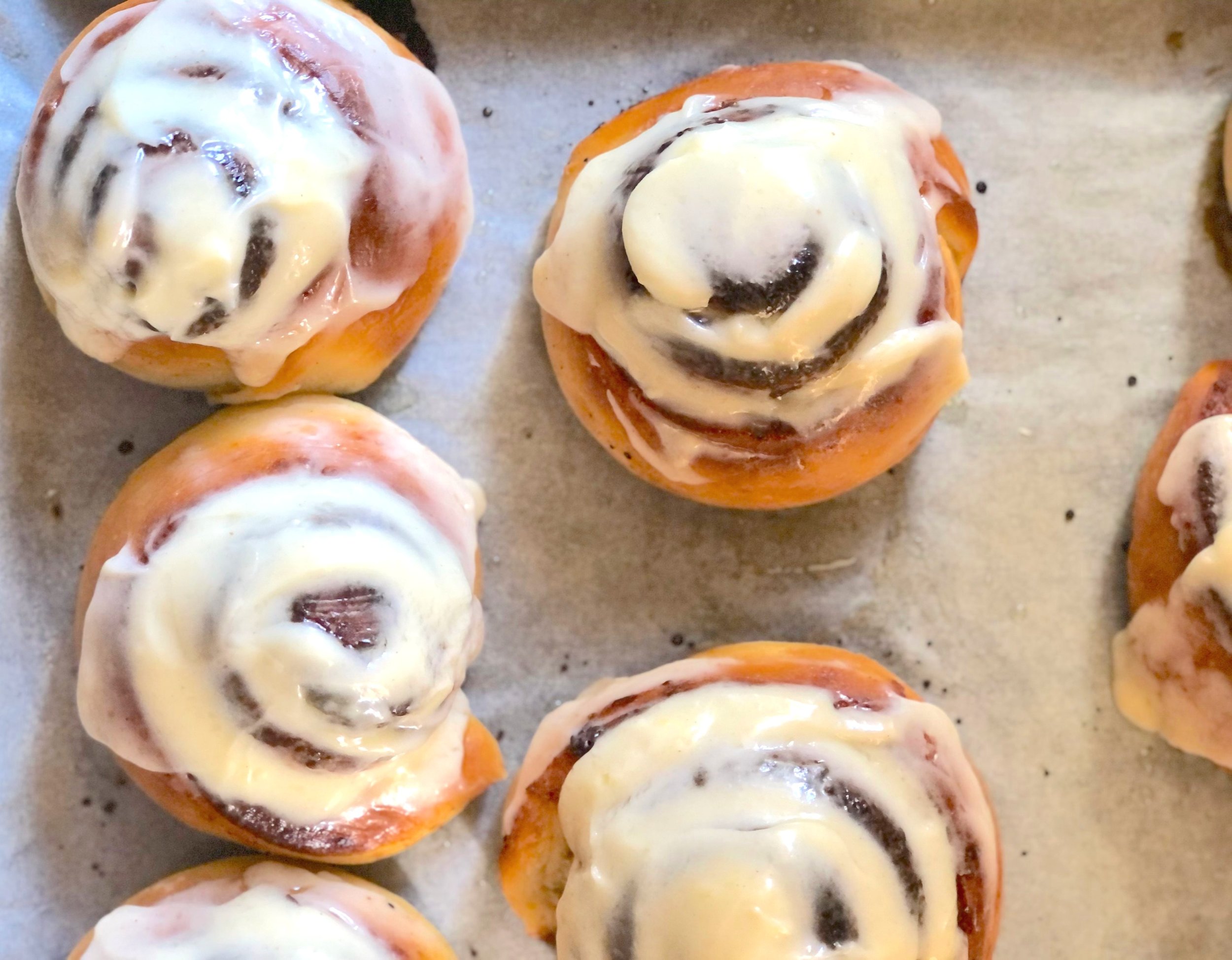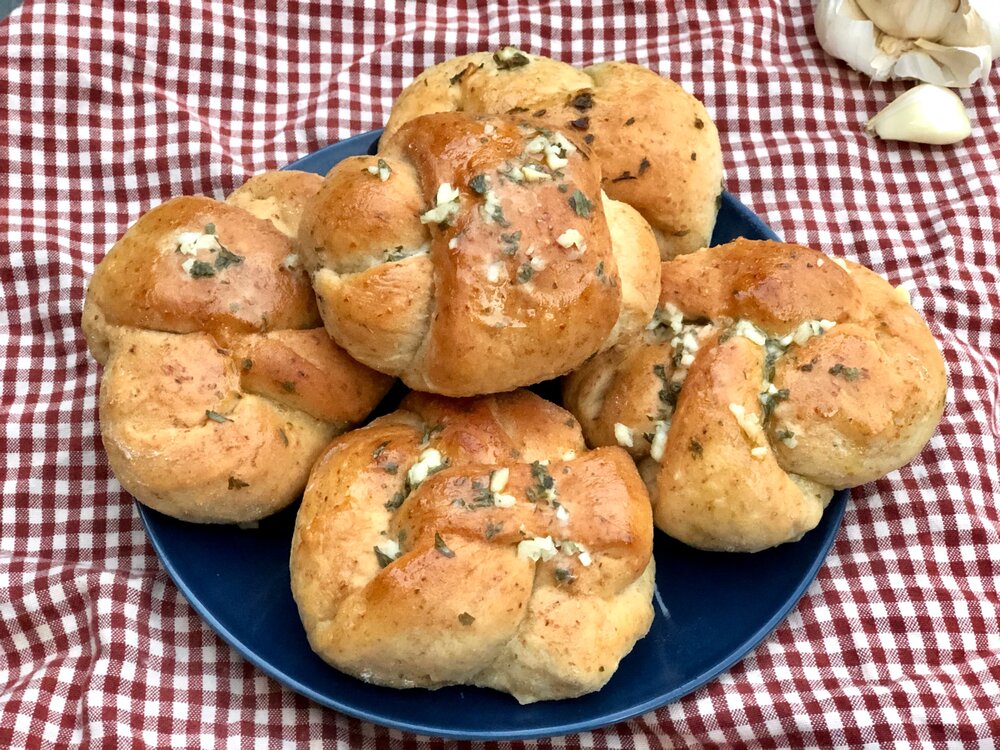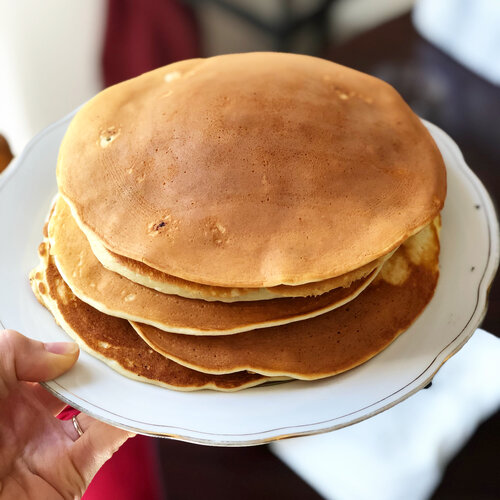Banana Chocolate Chip Muffins
/Banana chocolate chip muffins are always a good idea.
Probably my favorite way to use up overripe bananas, these muffins are moist, easy on the sugar because they’re already sweet from the bananas, and chocolatey. They’re simple enough to make that even my 2 year old can help make them.
We love them because they make sure our older bananas don’t go to waste and sourdough discard gets used up. This recipe also doesn’t require dirtying a bowl just to mash bananas. Often banana recipes instruct to mash bananas separately before adding into the already-mixed wet ingredients. Here, the bananas are mashed then the wet ingredients are added right in to the banana bowl.
Muffins require no fancy tools beyond a muffin tin. Muffins are my go-to for a quick bake with tasty results.
Use up sourdough discard
As mentioned above, muffins are a great way to use up sourdough discard. I find using up to 1/2 cup keeps the taste and texture subtle. Otherwise up to 1 cup discard can be used, although the taste will be more pronounced and the texture of the muffins will start to get a bit more bread like.
This post may contain affiliate links. If you make a purchase using these links, Jennyblogs may receive a small commission, at no extra cost to you. This helps to support Jennyblogs. Where possible, links are prioritized to small businesses and ethically and responsibly made items. For further information see the privacy policy. Grazie!
Banana Chocolate Chip Muffins
Makes about 12 muffins
Ingredients:
1 3/4 cup / 210g flour
1 tsp baking soda
1/2 tsp salt
3/4 cup / 128g mini chocolate chips, plus more for topping
3-4 very ripe bananas
1/2 cup / 113g oil
1/2 cup / 100g sugar
1 egg
1 tsp / 5g vanilla extract
up to 1/2 cup / 125g sourdough discard, optional
Directions:
Oven preheated to 375°F / 190°C. 1 muffin pan greased or lined with muffin liners.
In a medium bowl, whisk together flour, baking soda, salt, and chocolate chips.
In a large bowl, mash bananas. Add oil, sugar, egg, vanilla, and discard, if using. Mix well.
Add dry ingredients to wet ingredients, mixing until just moistened. Don’t over-mix.
Scoop batter into prepared muffin pan, filling until just about even with pan. Sprinkle with additional chocolate chips, if desired.
Bake for 17-19 minutes, or until muffins no longer look wet and toothpick inserted in center comes out clean. Remove from pan and cool.
Jenny’s Notes:
Depending on size of bananas and if sourdough discard is used, this recipe may make a bit more than 12 muffins.

Banana Chocolate Chip Muffins
Ingredients
Instructions
- Oven preheated to 375°F / 190°C. 1 muffin pan greased or lined with muffin liners.
- In a medium bowl, whisk together flour, baking soda, salt, and chocolate chips.
- In a large bowl, mash bananas. Add oil, sugar, egg, vanilla, and discard, if using. Mix well.
- Add dry ingredients to wet ingredients, mixing until just moistened. Don’t over-mix.
- Scoop batter into prepared muffin pan, filling until just about even with pan. Sprinkle with additional chocolate chips, if desired.
- Bake for 17-19 minutes, or until muffins no longer look wet and toothpick inserted in center comes out clean. Remove from pan and cool.
Notes
- Depending on size of bananas and if sourdough discard is used, this recipe may make a bit more than 12 muffins.
Nutrition Facts
Calories
274Fat
13 gSat. Fat
3 gCarbs
35 gFiber
2 gNet carbs
33 gSugar
11 gProtein
3 gSodium
215 mgCholesterol
15 mgNutritional information is approximate. Based on 1 muffin if recipe makes 12, not including sourdough discard.














